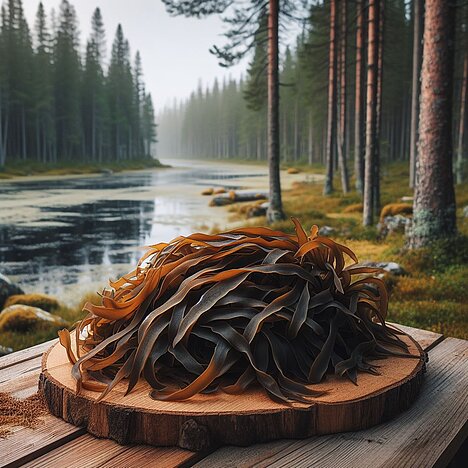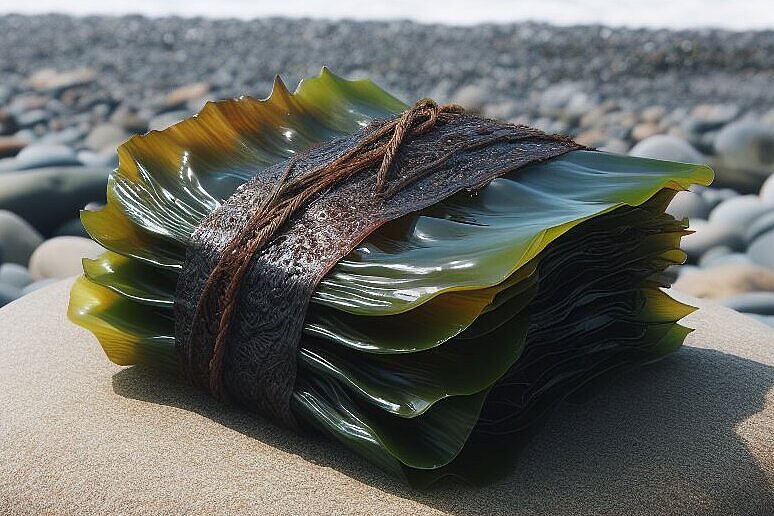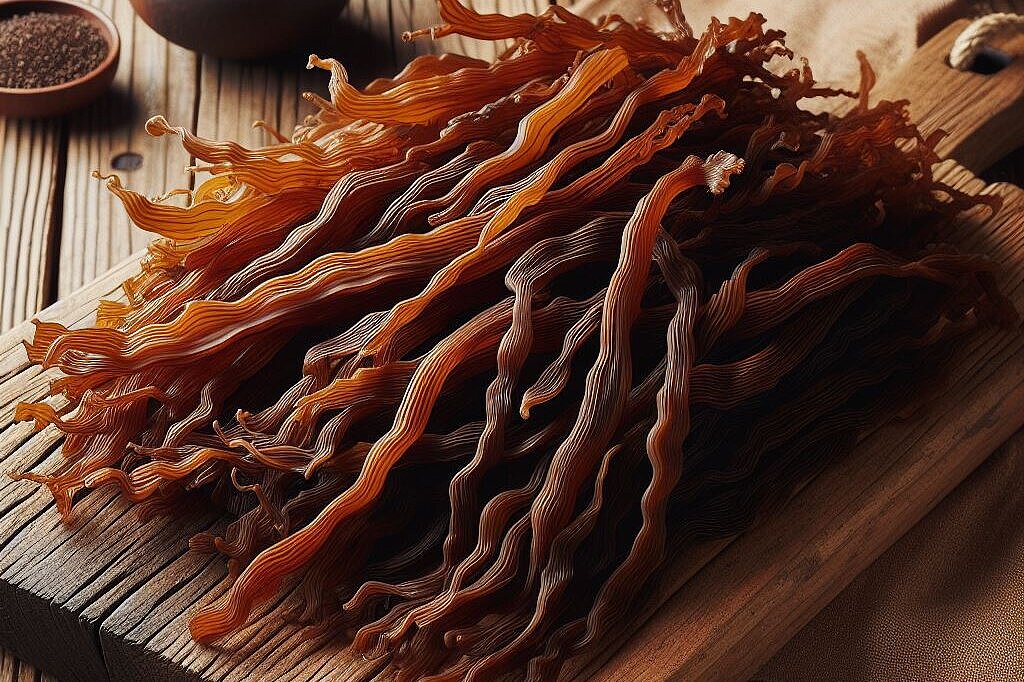Lobe kelp

Lappentang is a type of seaweed also known as dulse or Palmaria palmata. It grows on the coasts of the Atlantic and Pacific Oceans and is often used as a food supplement or as an ingredient in the kitchen. But is kelp also suitable for dogs? In this article, you'll find out what kelp is, what benefits and disadvantages it has for your dog and how best to feed it.
What is lobster kelp?
Lappentang is a red algae that is rich in minerals, trace elements, vitamins and antioxidants. It contains iodine, iron, calcium, magnesium, zinc, copper, manganese, selenium, vitamin A, B vitamins, vitamin C and vitamin E, among others. Lobe seaweed has a salty taste and a crunchy texture. It can be bought fresh or dried and processed as a powder, flakes or whole leaves.
What are the benefits of kelp for dogs?
Lapp kelp can have various health benefits for dogs. For example, it can:
- support thyroid function as it is a natural source of iodine
- Promote blood formation as it contains iron
- Improve bone and dental health as it contains calcium
- strengthen the immune system as it contains antioxidants and vitamins
- improve skin and coat health as it contains essential fatty acids
- regulate digestion as it contains fiber
- Promote detoxification as it contains chlorophyll
What are the disadvantages of kelp for dogs?
While kelp is a useful dietary supplement for dogs, there are some disadvantages or risks to be aware of. For example, it can:
- lead to an overdose of iodine if you give too much or if the dog is already on other iodine-containing products
- lead to an allergic reaction if the dog is sensitive to algae
- lead to an upset stomach if the dog is not used to algae or if it does not tolerate it well
- interact with other medications or supplements if the dog is taking them
- be contaminated with heavy metals or other harmful substances if obtained from an unclean source
How do you feed kelp to dogs?
If you want to give your dog kelp, there are a few things you should keep in mind. For example, you should:
- consult your vet before you start feeding it to make sure your dog doesn't have any health problems that could be affected by kelp
- choose a high-quality source of kelp that is free from contaminants and additives
- follow the recommended dosage, which varies depending on your dog's size and weight
- start feeding slowly and gradually increase the amount to get your dog used to the taste and effects of kelp
- monitor your dog's reaction to kelp and stop feeding if there are any signs of intolerance or side effects
Lapp kelp can therefore be a useful addition to your dog's diet if you use it correctly. It can provide your dog with many important nutrients and have a positive effect on his health. But as with everything, the dose makes the poison. So be careful and do your research before giving your dog kelp.
If you notice any signs of hypersensitivity or poisoning in your dog, you should see your vet immediately. We are not a substitute for a vet, but we try to be as accurate as possible. Every dog reacts differently and we recommend you get a second opinion or consult your vet if in doubt.
Stay healthy and take good care of your four-legged friend!😊
Similar to Lobe kelp
Nori is a seaweed that grows in shallow waters. It is harvested, washed, pressed into thin sheets and dried. Nori has a dark green color and a mild taste. It is rich in protein, fiber, minerals and...
Wakame (Undaria pinnatifida) is a marine brown algae species that was originally native to the coasts of East Asia. However, due to its invasive nature, it has now spread to many other seas. Wakame...
Kombu is a brown algae that belongs to the genus Laminaria. It grows in cold seas and forms long, leathery leaves with finger-like appendages. Kombu is mainly cultivated and harvested in Japan,...
Arame (Eisenia bicyclis) is a dark brown seaweed that is mainly found in the cold waters around Japan. It is characterized by its fine, thread-like strands, which develop a sweetish note after...



